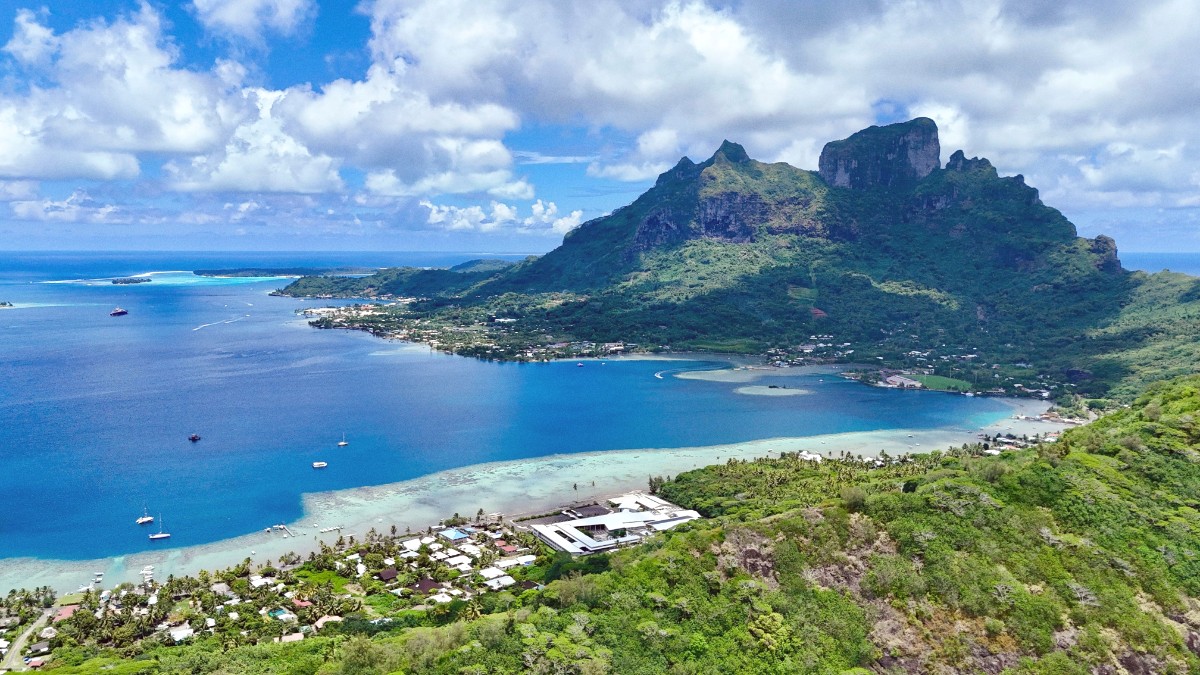
Tahiti And French Polynesia
French Polynesian cuisine reflects a fusion of traditional Tahitian, French, and Chinese influences, shaped by the islands' environment.
The arrival of French colonizers introduced European culinary techniques, while Chinese immigrants contributed stir-fries and noodle preparations, creating a distinctive taste profile.
Fish (tuna, mahi-mahi, snapper) forms the core. Abundant fruits include mango, pineapple, papaya, and passion fruit.
Taro, breadfruit (uru), sweet potato are staple carbohydrates. Coconut milk adds creaminess and a distinctive flavor to many dishes.
Lime "cooks" raw fish in Poisson cru. Tahitian vanilla, known for its rich, floral aroma, features in desserts and sauces.
The national dish of French Polynesia: fresh, raw tuna marinated in lime juice and coconut milk with diced vegetables.
A refreshing and iconic taste, widely available at resorts, local eateries, and roulottes.
Freshly caught fish like mahi-mahi or tuna, often grilled simply with butter, lemon, or a light sauce.
Many restaurants and roulottes offer daily fresh catch options.
Poulet Fafa: chicken cooked in coconut milk with taro leaves. Chao Mein: Chinese noodle dishes, popular due to Chinese influence.
Both present an unique fusion of flavors; Fafaru (fermented fish) is a local acquired taste, less common for tourists.
Near Vaitape Pier in the evenings, these provide the best source for affordable and authentic meals like grilled fish, steak frites, and Chinese food.
Po'e is a sweet, pudding-like dessert (taro, banana, or pumpkin), served with coconut milk. Fresh fruit platters are abundant and delightful.
These establishments reside mainly within luxury resorts, offering sophisticated menus and ambiance.
These selections deliver quality meals in a relaxed setting, often on the main island.
For affordable and authentic options, look to these spots.
Smaller versions of the Papeete market in Vaitape; offer fresh produce, fish, and some prepared snacks.
A glimpse into local commerce, suitable for self-catering.
Located in Vaitape, these stock groceries, snacks, drinks, and ingredients for meal preparation.
A good source for beverages and water.
Luxury resorts often feature Italian, Japanese, and American cuisine.
Chinese and French influences are common in restaurants.
Many establishments adapt local ingredients to international dishes.
A globalized menu selection across many dining locations.
Halal and Kosher food options are extremely limited, if available at all, in Bora Bora.
Travelers with these dietary requirements should plan for extensive self-catering.
Bringing pre-packaged foods suitable for your diet is a consideration.
Choose resorts willing to prepare special meals with advance notice, but do not expect certified options.
For severe allergies, carrying a translation card in French clearly stating your restrictions can be immensely beneficial.
Using a translation app on your phone can bridge language gaps when explaining dietary needs at local eateries.
Many resort restaurants reside directly over the lagoon, featuring glass floor panels to view marine life below.
Resorts frequently offer romantic private dining experiences on secluded beaches or floating platforms.
Resorts host Polynesian theme nights with buffets and traditional dance shows. Lagoon tours often include motu picnics.
Guesthouses on the main island offer direct interaction with local families and cultural immersion.
A more personal and authentic cultural connection.
Some resorts or guesthouses feature basic classes in weaving, sarong tying, or traditional cooking demonstrations.
A tangible introduction to Polynesian crafts and skills.
Private dining experiences and special events often require booking ahead.
Ask about resort theme nights or special dining events upon arrival.
If staying on a motu resort, check for boat shuttles to Vaitape for evening roulotte visits.
Be adventurous with your food selections. Trying Poisson cru at a local roulotte delivers an authentic taste of the island.